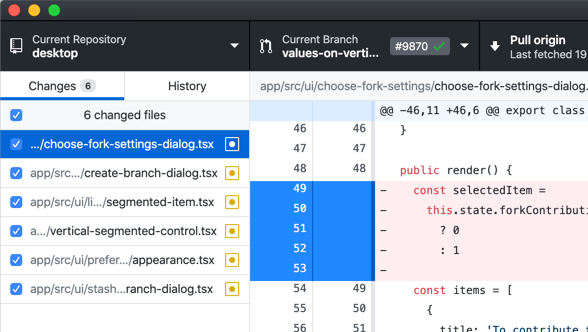

- #BEST WINDOWS GIT CLIENT 2015 INSTALL#
- #BEST WINDOWS GIT CLIENT 2015 CODE#
- #BEST WINDOWS GIT CLIENT 2015 DOWNLOAD#
- #BEST WINDOWS GIT CLIENT 2015 MAC#
Most of the times, you will be using the existing repository hosted in your organisation’s network. Congrats! You have successfully configured Git on your machine. Http.sslcainfo=C:/Program we can see the user name and email address, which we configured earlier. This command will generate the following output: =astextplainį=git-lfs filter-process Now, execute the command given below to validate the configuration: $ git config –list This information will appear in each commit you perform. $ git config -global user.email Note: Use your user name and e-mail address while configuring Git. Configure the user name and email by executing the commands given below in a terminal: $ git config -global user.name “Jarvis” We have successfully installed Git on a Windows machine. You should see a command prompt, as shown in Figure 2. Go to the Start menu and launch ‘Git Bash’. Don’t forget to select the ‘Windows Explorer Integration’ option during setup. Double click on the installer and follow on-screen instructions.ģ.

#BEST WINDOWS GIT CLIENT 2015 DOWNLOAD#
Go to and download the latest version of Git.Ģ.
#BEST WINDOWS GIT CLIENT 2015 INSTALL#
Follow the steps given below to install Git on a Windows server:ġ. One can download and use it without any restrictions. Push: This Git operation uploads files (one or more commits) from a local repository to the remote repository. Pull: This syncs the local repository with the remote repository by downloading new files. A unique SHA-1 hash is assigned to each commit.Ĭlone: This is a Git operation that downloads the entire remote repository to the local file system. The local repository resides on the local file system, whereas the remote repository resides on the remote Git server.Ĭommit: This is a Git object that represents the change set within the repository.
#BEST WINDOWS GIT CLIENT 2015 CODE#
Repository: Repository is the workspace that contains source code and metadata of its versions. Working tree: This is a directory on the local file system where the source code resides. This section discusses the terminology and operations of Git. The connectivity to the server is required only while syncing the changes. Hence, it is possible to work on the repository even when the Git server is unavailable. Every user gets the entire copy of the repository.

A distributed version control system does not rely on the availability of the central server. This is where distributed version control systems come into the picture. If it fails, all collaborators who depend on the server will be affected. The central server is a single point of failure. However, this design imposes a major limitation.

In this model, every operation requires communication with the central server. Certainly a great showing for Git on Windows.A centralised version control system uses a central server to store all files and enable collaboration. I do wish it had a bit more low level control of Git, but for most people, it’s pretty good. It’s quite slick and matches Microsoft’s Zune/Metro design. Update: Only a little while after I posted this, Github put out a Windows client. Oh, and I haven’t really found any slick Linux ones that work in Windows either.
#BEST WINDOWS GIT CLIENT 2015 MAC#
But after working with really good Mac clients, it’s disappointing that there aren’t any good Windows clients. Other projects such as Tortoise and the original git client are fine for basic work, I guess. SmartGit is the best thing I’ve found, but the interface is a little wonky, and its merging and merge conflict stuff leaves a little to be desired. there just aren’t any Windows git clients that are as good as their Mac equivalents. There’s just enough chrome that git functionality is still there, but isn’t obstructed.īut then I come home to work on my own personal things in Windows, and well. I’ve since switched to SourceTree by Atlassian (who also make JIRA and a handful of other products), and it’s gone pretty well. For awhile I used Tower, but recently it’s been more buggy and crashes far more than it probably should. At work we only use Macs, and there are a handful of pretty good GUIs for git. It’s been at least a year since I’ve dealt with Subversion, and really, there’s no going back. On Windows git clients Posted on May 6, 2012īasically all the work I do these days is managed with git.


 0 kommentar(er)
0 kommentar(er)
